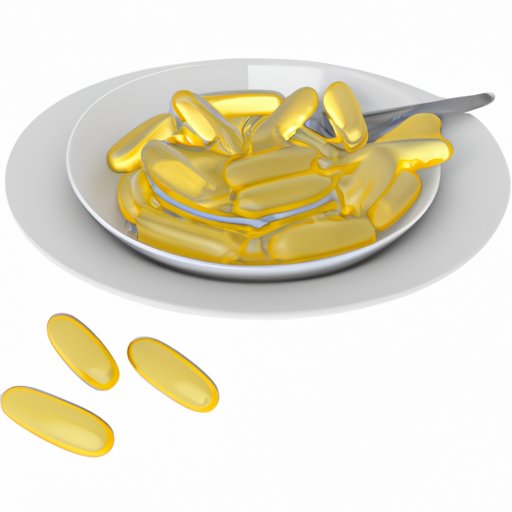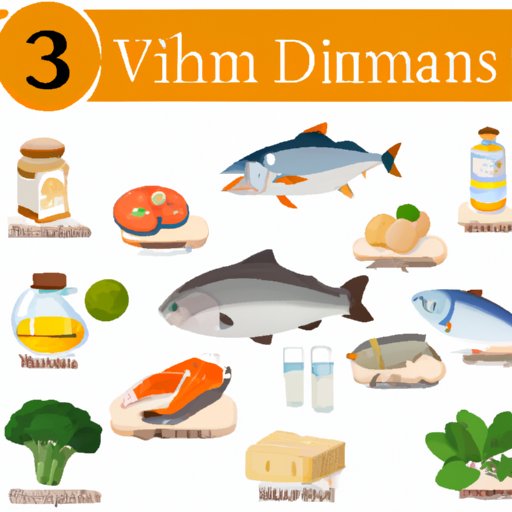
A Comprehensive Guide to Foods Rich in Vitamin D3
Vitamin D3 is an essential nutrient important for overall human health, supporting bone, immune system, and muscle function. Although the body produces vitamin D3 upon exposure to sunlight, some people may struggle to get enough vitamin D3 through sun exposure or diet alone, especially during winter seasons with limited sun exposure. Hence, incorporating vitamin D3 rich foods into one’s daily meals is crucial. In this article, we provide a comprehensive guide to vitamin D3 rich foods along with their respective nutrient values to help you maintain adequate vitamin D3 levels in your body.
Overview of Different Types of Vitamin D3 Rich Foods
Generally, vitamin D3 is found in various foods, including meat, fish, dairy, and plant-based foods. Some foods like breakfast cereals, juices, and bread may be fortified with vitamin D3 for people who struggle to get enough of the nutrient from whole foods. It’s important to note that the Recommended Dietary Allowance of vitamin D3 varies by age and gender. For example, for adults under 70 years, the recommended daily intake is 600-800 IU per day.

Top 10 Vitamin D3 Rich Foods for a Healthy Diet
Here is a list of our top 10 vitamin D3 rich foods with their respective nutrient values:
- Salmon: 1,000 IU per 3 ounces (cooked)
- Tuna: 150-250 IU per 3 ounces (cooked)
- Egg yolks: 40 IU per yolk
- Fortified milk: 100 IU per cup
- Fortified orange juice: 137 IU per cup
- Fortified cereal: 40-50 IU per serving
- Cod liver oil: 1,360 IU per tablespoon
- Sardines: 250 IU per 2 sardines (canned in oil)
- Shrimp: 152 IU per 3 ounces (cooked)
- Almond milk: 100 IU per cup
These 10 foods are excellent sources of vitamin D3 and can be easily incorporated into your daily meals to ensure adequate intake.
The Importance of Vitamin D3 and The Best Sources for Your Diet
Vitamin D3 helps our bodies absorb calcium from food, supporting bone growth and health. Vitamin D3 also plays a role in supporting immune function and reducing inflammation. Low levels of vitamin D3 have been linked to various health issues, including rickets, osteoporosis, diabetes, and certain cancers.
To ensure optimal vitamin D3 levels, it’s crucial to incorporate the best sources of the vitamin. As mentioned above, salmon, tuna, sardines, and fortified milk, orange juice, and cereal are excellent sources of vitamin D3. Fortified foods make it easier to meet the recommended daily intake of vitamin D3. People who have lactose intolerance or follow a vegan or vegetarian diet may also benefit from fortified plant-based milk and dairy substitutes.
How to Get Enough Vitamin D3 Through Your Food Choices
The amount of vitamin D3 a person needs varies by age, gender, and overall health. On average, adults under 70 years need 600-800 IU per day to maintain healthy vitamin D3 levels. Children and older adults may need more vitamin D3.
To ensure you’re getting enough vitamin D3 through your food choices, incorporate the top 10 vitamin D3 rich foods mentioned earlier into your meals. Additionally, try and spend some time outdoors and get some sunlight exposure which aids in the body’s ability to generate Vitamin D3.
However, excessive consumption of vitamin D3 may lead to toxicity with symptoms such as nausea, vomiting, and weakness. High levels of vitamin D3 may be obtained through vitamin D3 supplements, sunlight exposure, and fortified foods, hence it’s essential to follow recommended doses.
Easy Ways to Incorporate Vitamin D3 Rich Foods into Your Daily Meals
Incorporating vitamin D3 rich foods into your daily meals doesn’t have to be hard. Here are some simple ways to do so:
- Add canned salmon or sardines to your salad
- Choose fortified breakfast cereals or oatmeal as your breakfast option
- Grill or roast fatty fish like tuna or salmon and serve with veggies
- Enjoy a fortified glass of milk or orange juice with your meals
- Hard-boil some eggs and use them as a salad topper or snack
Additionally, meal planning can aid in ensuring adequate intake of vitamin D3 in one’s diet. It also helps in balancing nutrient intake and controlling portion sizes, hence, improving overall healthy meal choices.
If you struggle to incorporate vitamin D3 rich foods into your daily meals, consider supplements. Vitamin D3 supplements are readily available and can be purchased online or at a pharmacy. However, it’s essential to consult with your healthcare provider before starting any supplements.
Conclusion
Incorporating vitamin D3 rich foods into your daily diet is essential for maintaining healthy vitamin D3 levels, promoting immune function, strengthening bones, and reducing inflammation. The top 10 vitamin D3 rich foods include salmon, sardines, egg yolks, fortified milk, orange juice, and cereals. Additionally, spending time outdoors and getting some sunlight exposure can also help in boosting vitamin D3 levels. Consider incorporating the suggested meals in this article into your day to day routine to ensure adequate supply, and don’t forget to speak to your doctor before taking any supplements.





